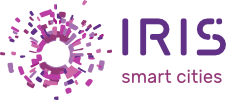
“Projects should have a sound business plan and be self-sustaining,” says analyst Julian Bammer.
By Gloria Pallares
An estimated 85 percent of people in the European Union (EU) is expected to live in cities by 2050, facing ever more pressing challenges in terms of air quality, housing and transportation. Cities often face similar problems, but smart mobility, energy and ICT solutions tend to be developed and implemented locally, leading to an inefficient use of knowledge and resources.
As a part of his thesis for an MSc in Economics at Utrecht University, business and data analyst Julian Bammer turned to the IRIS Smart Cities initiative to better understand the replication of smart solutions. His case study was a housing association in Gothenburg (Sweden) that, instead of offering private parking spaces, provides alternative mobility options through an app –from electric bikes to public transportation to an electric car-pool.
We spoke with Bammer about why replication matters, what are some of the factors that facilitate, or hinder, replication, and how he envisions the future of cities in a post-COVID-19 world.
-What are key environmental and socioeconomic factors that affect the replication potential of smart city projects?
Two key factors are policy goals, which may change from city to city, and citizen engagement. For example, Amsterdam does not collect organic waste, so some citizens have collectively created their own system to turn residues into compost for vegetable growing. Other vital aspects are human capital, or local capacity for smart city development, and support services such as infrastructures –it may be hard to replicate a car-free housing project in a city without good public transport o alternative mobility options.
-What about technology?
Technology and data are crucial elements of the smart city ecosystem. They are central to developing and integrating smart city solutions, but the development and adoption of cutting-edge innovations is faster in the private, as opposed to the public, sector. There is a need to better harness the potential of new technologies for smart cities.
-You note that policy-driven, subsidized smart city solutions are hard to replicate. What approach should cities adopt, instead?
A heavily subsidized pilot project may prove hard to replicate in cities with less resources. Smart city solutions should be backed by a sound, long-term business plan and, ideally, be self-sustaining. The replicability of an energy, mobility or ICT solution should be thought through from the start to make the most of investments.
-How do you envision the cities of the future?
The are many things that can change for the better. Hopefully, the COVID-19 pandemic is opening our eyes to the cities we have, and the cities we want to live in –places with fewer cars, more room for pedestrians and greater citizen awareness of, and support for, more sustainable and efficient ways to function.
17 Mar 2021

